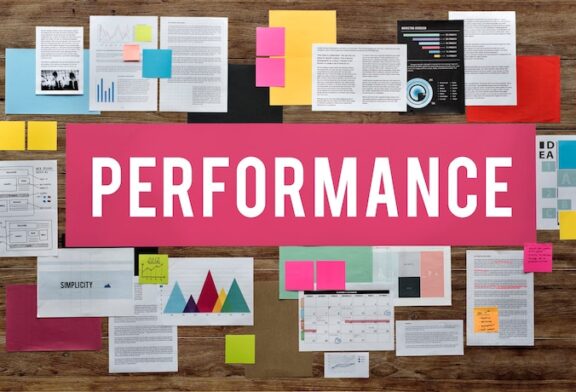Top talent act as multipliers, attracting additional top talent to work for a business. But attracting and retaining top talent requires more than just an appealing package of company perks; it requires a culture that values growth and learning, where employees are given ample opportunities to rise to exciting new challenges.
Decisions on engaging, retaining and attracting new talent are now supported by a wide range of data drawn from performance management tools, giving HR leaders and managers a unique insight into what drives ambition and encourages it to thrive. Read on to find out how businesses are transforming their processes to build teams of truly talented individuals.
 Why talent matters
Why talent matters
Attracting, retaining and developing top talent gives your company a distinct advantage over the competition. With employees increasingly changing companies with greater frequency, building systems able to identify high performance and how this benefits both the individual and the organization improves retention, increase engagement and ultimately leads to the most successful outcomes.
Identifying and nurturing top talent:
- Offers a competitive advantage. Businesses are able to leverage the skills of their most talented employees, building teams with complimentary talents to deliver performance which outshines the competition.
- Introduces agility and flexibility. The more diverse the workforce’s combined talents are, the better they can adapt to new challenges.
- Orients towards growth. Talented teams and individuals understand best how to develop their talent stacks and offer new insights into the company’s development.
- Supports a culture of learning. Nurturing talent boosts a culture which celebrates the development of new skills and embeds this mindset throughout the workforce.
- Attracts more top talent. Companies which put a priority on talent become a magnet for other high performing individuals who are drawn towards an environment which demonstrably appreciates personal and professional development.
Let’s take a look at how managers and leaders can best manage and develop talent within their business through culture and feedback while leveraging data channelled through performance management tools to make informed decisions to retain high performers and attract more top talent to the team.
Managing – and nurturing – talent
Identifying and developing talent requires a particular kind of managerial mindset in which an environment of learning and growth is fostered. It is also a future-oriented mindset, where challenges are framed as opportunities and regular feedback is employed to help ensure consistent alignment between individual and company goals.

Fostering a culture of growth and learning
Growth and learning should be one of the foundational elements of any company’s culture if they wish to make the most of the talent available. Apple’s “Think Different” campaign from the late 1990s captures in two simple words how an effective cultural attitude can be embodied in a simple but concise manner, and companies should aim to deliver similarly on-point messaging to the talented employees they seek to nurture.
By placing a high value on growth and development throughout the culture – from the onboarding and induction processes through to daily messaging a company’s internal communications platform – businesses can send a clear signal to their employees that the development of talent is something they view as a top priority.
Reframing challenges as opportunities
How an individual reacts to a crisis or challenge can reveal a great deal about their ability to adapt. By reframing challenges as opportunities for growth, managers and leaders can better identify those employees who are capable of going above and beyond their job description, as well as those who might need additional help.
As Margaret Rogers explained in the Harvard Business Review article, A Better Way to Develop and Retain Top Talent:
“Treating every challenge your employees faces as an opportunity for practice and growth — whether it is something personal, like improving communication skills, or practical, like learning new technology — is critical to establishing an environment in which people believe they are valued enough as individuals to be given the time and space to flourish. It also gives managers the chance to help their employees effectively upskill and reskill on a case-by-case basis as new obstacles arise outside of formal training and in everyday work experiences.”
Ongoing feedback and celebrating impact
Continuous two-way feedback between managers, team leaders and their employees is another effective mechanism for recognising high performers and identifying gaps in talent where training and other corrective mechanisms can be implemented. Regular one2one meetings, check-ins and soliciting feedback via employee surveys, delivered via performance management tools can help ensure this feedback isn’t overlooked.
This feedback can be combined with an assessment of an individual’s goal-related achievements to give managers the opportunity to celebrate impact. By commending high performing employees visibly, the mindset which encourages the development of talent is reinforced throughout the organization as a reflection of the company’s core values.
Analysing data to track talent
With businesses adapting to an increasingly dispersed workforce and vast numbers of employees now working remotely, new systems of data-driven analytics are being brought online to allow them to monitor performance and engagement and track talent. Managers and leaders are able to marshall these resources to leverage continuous sentiment, identify top talent and provide career development and critical support.
Some of the tools businesses can adopt via their performance management platform to identify and track talent include:
Multi-channel communications
Articulating a culture that values the nurturing and development of talent requires a multi-channel communications platform capable of delivering this messaging across the company. Whether this means sending out worksheets and training material or communicating urgent updates, a platform that allows for instant notifications delivered via email, SMS or to desktop devices means that individuals, teams and departments receive pertinent information immediately. Digital sign-offs mean that managers have clarity that their messages have been received.
Performance leaderboards and employee rewards
Recognising great performance helps to replicate the mindset which brings about great results. Implementing a digital system for recognition and rewards is a way of celebrating these behaviours in a visible manner and encouraging alignment with a company’s core values. Reward points give recognition its due place in the work pipeline, boosting confidence in those who receive them while encouraging healthy competition between individuals and teams seeking to improve their performance.
Dashboards and analytical reports
Customizable dashboards allow managers and team leaders to instantly identify top-performing members of staff, whether this is based on their progress or completion of objectives, or ranked by their performance review scores. These insights allow companies to quickly grasp what factors are most often exhibited by top talent, giving them the flexibility to both provide these A-players with more opportunities to develop, as well as contrast these findings with under-performing employees and offer them training and development to improve.
For additional ease of use, some performance management software systems allow users to perform these functions within Microsoft Teams, including the sending and receiving of internal communications and the scheduling of reviews and one2ones.
Building talent stacks

Performance management tools can also be used to log and identify different skills, allowing individuals to expand upon their base of learning and develop a talent stack while giving employers an insight into the strengths and weaknesses of employees, teams and departments so that they can better address any skill gaps and adjust personal development plans.
Talented employees value personal and career development highly, as reflected in the growth of new types of learning and the evolution of career models. A study from Josh Bersin, Untangling the HR Tech Market in 2020 spotlighted the growth in micro-learning, in which employees are able to access videos, articles and other media to assist them with immediate concerns. Conversely, macro-learning requiring courses and other longer-term educational programs can be used to expand a person’s talent stack with deeper coaching and training.
By identifying the strengths and weaknesses of employees and teams, leaders can provide access to the necessary training and resources to raise the talent game throughout the company.
Leveraging data to hire the top talent
The ability to track and analyse the talent stacks throughout a company – from the individual to the teams and departments – affords business leaders and HR leaders a clear view of potential candidates and skills required for new roles. When it comes to making the final decision to hire someone, this data can be invaluable. The Harvard Business Review article, How The Best Managers Identify and Develop Talent, explains how these decisions should be data-driven:
“When you hire someone, outline clear performance goals that can be easily evaluated by others, and see whether your view of their performance aligns with what others think and see. Likewise, before you nominate someone as a high-potential employee, arm yourself with solid data and evidence to ensure that your decision is fair and sensible, even if the future proves you wrong. Talent identification is an ongoing process of trial and error, and the point is not to get it right, but to find better ways of being wrong.”



 Why talent matters
Why talent matters

